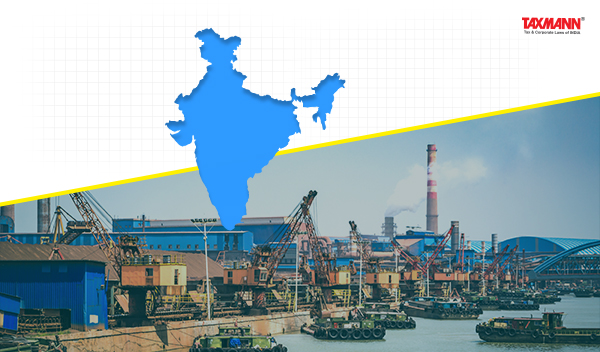[Opinion] M&A in the Ports Sector in India | Key Regulatory and Contractual Considerations
- Blog|News|Company Law|
- 3 Min Read
- By Taxmann
- |
- Last Updated on 19 November, 2024

Rajat Sethi, Aakanksha Joshi, Apurv Sharma & Ameesha Tripathi – [2024] 168 taxmann.com 338 (Article)
India is a strategically important location for global trade. With its 7,500 kms coastline, 12 ‘major ports’ (notified as such by the Government), 200+ ‘non-major ports’ (ports that have not been notified as ‘major ports’) and a vast network of inland waterways, India has a significant maritime presence that accounts for 95% of the country’s international trade volume.
In the last decade, the Indian government has attempted to address various market concerns, including in relation to competitive bidding processes, tariff, operational efficiencies and dispute resolution mechanisms. The ‘Maritime Vision India 2030’ (“MIV 2030”) issued by the Government provides a blueprint for improvement of the maritime sector in India and creation of world class safe, green and sustainable ports. With an envisioned overall investment of INR 3 – 3.5 trillion (~USD 35.54 – USD 41.46 billion), the MIV 2030 aims to unlock an estimated INR 2+ trillion (~USD 23.69+ billion) of potential annual revenue for Indian ports.
The Indian maritime sector has seen an increased participation from private players. The first public private partnership (“PPP”) in the ports sector was formed in July 1997, where the Jawaharlal Nehru Port Trust entered into an agreement with the Nhava-Sheva International Container Terminal. Since then, there has been substantial development of port projects on a PPP basis bolstered by favorable policy changes through the years. As of April 2022, 123 PPP projects have been recognized with an estimated investment of INR 2.63 trillion (~USD 31.16 billion).
The Indian government has permitted 100% foreign direct investment under the automatic route (i.e., without requiring government approval) for port development projects. However, all investments (whether by subscription or transfer) by entities incorporated in a country sharing land borders with India or whose beneficial owners are situated in or are citizens of such a country require prior government approval.
This note sets forth certain recent developments in the ports sector to enable further private participation and highlights key regulatory and contractual considerations relevant for mergers and acquisitions in the ports sector.
1. Key Regulatory Developments
1.1 Public-private partnership
The Indian government continues to award projects on a PPP basis by adopting a ‘landlord’ model under which port operations and maintenance is undertaken by private players and the government acts as a landlord and a regulator. This practice has provided flexibility to private players to operate port assets without undue regulatory oversight. In addition, certain state governments have been enthusiastic adopters of PPP for the development of non-major ports, strengthening their trade and economies.
1.2 Tariff
One of the primary challenges earlier faced by major ports was the regulatory oversight on tariff imposed by the Tariff Authority for Major Ports (the “TAMP”). The TAMP had the statutory authority to regulate the rates and charges imposed by major ports, thereby subjecting them to price controls, unlike non-major ports that could set and charge market rates. This led to relatively quicker growth of non-major ports. With the introduction of the Major Ports Authorities Act, 2021, the Board of the Major Port Authority (for each major port) has been authorized to frame its own scale of rates in accordance with market conditions, dissolving the power of the TAMP.
1.3 Model Concession Agreement
In 2021, the Indian government issued changes to the model concession agreement (the “MCA”) for private sector projects in major ports. One key change is that terminal operators are now eligible to apply for renewal of the concession after the expiry of the initial concession period (generally, 30 years). For this purpose, the concessionaire will be provided with the right to match the highest bid obtained in an international competitive bidding process if the concessionaire’s bid is within 10% of the highest bid. The concessionaire will be deemed to be qualified to bid and will not be required to participate in the pre-qualification process. Another significant change is the introduction of a provision for relief through the adoption of a business revival plan where unforeseen circumstances lead to a reduction in cargo handling.
Click Here To Read The Full Article
Disclaimer: The content/information published on the website is only for general information of the user and shall not be construed as legal advice. While the Taxmann has exercised reasonable efforts to ensure the veracity of information/content published, Taxmann shall be under no liability in any manner whatsoever for incorrect information, if any.



 CA | CS | CMA
CA | CS | CMA
